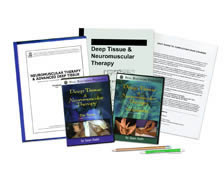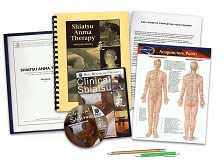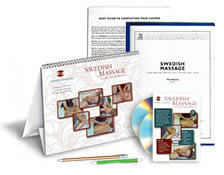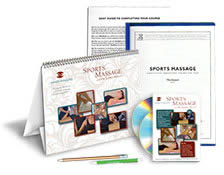The irritation and inflammation associated with this condition is typically caused by repeated tendon friction caused by excessive use of the thumb. Those at risk for developing a repetitive stress injury typically partake in the following:
- Awkward or unnatural body posture. Each joint in the body has a neutral position, where staying within its range of motion is least likely to cause injury. Any deviation from the neutral position puts increased strain on body tissues.
- Use of excessive force to perform a task. Examples of excessive force are pounding on piano keys or hammering harder than necessary to drive nails.
- Extended periods of static work. Static work requires muscular effort without movement taking place. Instead of the circulation created from movement, static work contracts muscles, preventing blood from reaching tissues to nourish cells and carry away waste products. Over time, this lack of circulation causes muscle tissue to lose its ability to repair microtraumas. Examples of static work include sitting at a desk for long hours, holding the arms overhead to paint a ceiling and repeated text messaging. This last example of static work is why de Quervain’s is becoming more commonly referred to as Blackberry Thumb.
Symptoms
Symptoms of de Quervain’s include:
- Radial pain or soreness upon thumb or wrist movement from the thumb to the forearm. Pinching, grasping and similar movements may aggravate the pain.
- Pain when a fist is made.
- Swelling and tenderness at the base of the thumb and the radial side of the wrist.
- Feeling or hearing squeaking (crepitus) as the thumb’s tendon slides through its sheath.
- Numbness in the back of the thumb and index finger, caused by the swollen tendon rubbing on a nerve.
- A fluid-filled cyst in the same region as the swelling and pain.
- Difficulty moving the thumb and wrist during activities involving grasping or pinching.
In reference to de Quervain’s tendonitis, Alan Hedge, the director of the Human Factors and Ergonomics Laboratory at Cornell University, says “Eventually you get to the point where you won’t be able to grip anything. Your ability to grip an object depends very much on the thumb — the thumb is the most powerful of the digits, so when movement of the thumb becomes painful you can’t hold on to things.”
Specialized Test
While orthopedic diagnosis is outside a massage therapist’s scope of practice, being familiar with the Finkelstein test physicians use for de Quervain’s evaluation can be useful. Conduction of the Finkelstein test is done by asking the client to fold their thumb across the palm of the affected hand and then bend the fingers over the thumb. A person with de Quervain’s will experience sharp pain when the wrist is bent toward the ulnar side. Feeling pain about three inches above the forearm may indicate a condition called intersection syndrome. This is similar to de Quervain’s tenosynovitis, but affects a different area of the wrist and requires different treatment.
Treatment
Depending on the type of practitioner seen and the severity of the de Quervain’s, many treatment options exist. Typically, combinations of the following ten options are recruited:
- Resting the thumb. This allows for microtrauma healing and inflammation recovery. Complete rest should last no longer than two to three days, because range of motion and muscle strength must be maintained.
- Thermal Application. Applying ice packs to reduce swelling and inflammation or gentle heat to increase circulation.
- Medicine. Taking an anti-inflammatory medicine such as ibuprofen to reduce pain and inflammation.
- Injections. Corticosteroids may be injected into the area by a physician to lower inflammation and swelling. In some cases, local anesthetics may also be given by injection.
- Splinting. Wearing a splint covering the wrist and thumb protects the area from aggravating activity.
- Transcutaneous electrical nerve stimulation (TENS). TENS involves the use of a patient-controlled portable device that sends mild electrical impulses through injured tissues via electrodes placed over the skin. It is reported to relieve pain in 75–80% of patients treated for repetitive motion disorders.
- Surgery. Severe cases may require surgical intervention for nerve decompression, tendon release, and repair of loose or torn ligaments.
- Acupuncture. Studies funded by the National Center for Complementary and Alternative Medicine (NCCAM) since 1998 have found that acupuncture is an effective treatment for pain related to repetitive motion disorders.
- Massage. Most effective for de Quervain’s are techniques found in sports massage, Swedish massage, shiatsu and neuromuscular therapy. Massage increases the circulation that stagnates in static injuries, increases the thumb and wrist’s range of motion and can breakdown scar tissue contributing to pain and numbness.
- Physical Therapy. Rehabilitative exercises and stretches help speed recovery and prevent re-injury.
Prevention
Similar to most repetitive stress injuries, some suggestions for preventing de Quervain’s includes:
- Taking frequent breaks from repetitive tasks.
- Regularly engaging in stretching and strengthening exercises for the wrists and hands.
- Adopting an ergonomic work environment.
- Practicing proper wrist alignment and posture during all daily tasks.
- Avoiding repeated keystrokes with only one thumb (practice ambidexterity).
Technology
The burgeoning text messaging and video game markets are spawning millions of new de Quervain’s cases. As technology creates smaller devices for us to master, the accompanying repetitive motion injuries involve smaller, more specific locations. While computers are infamous for their propensity towards carpal tunnel syndrome, the miniaturization of products has coined the terms ‘Blackberry thumb’, ‘nintendonitis’ and ‘iPod finger’.
Entrepreneurs are recognizing this trend and using creativity to bring therapeutic massage to those who need it. Several Hyatt Regency Spas across the country are now offering Blackberry Thumb Massage for their guests. A hotel news release describes a session; “First, hands are warmed up with soothing rocks and an aroma hot towel. Next, kneading and compressions loosen muscles and warm oil is applied with firm strokes. The therapist then kneads and stretches deltoids, biceps, triceps, flexors and extensors, and uses an acupressure massage technique on hands and arms. The 30-minute treatment culminates with an aroma hot towel cleanse on each hand.’”
As of yet, there are no detailed statistics on how many people are suffering from this condition but doctors are reporting seeing a significant increase in de Quervain’s. The American Society of Hand Therapists has issued a consumer alert, warning users of small gadgets that heavy thumb use can lead to swelling of the sheath around the tendons in the thumb.
Being familiar with the terminology, symptoms, causes, treatments and prevention will aid massage therapists in recognizing this repetitive motion injury. While you may not wish to replicate the Hyatt’s ingenious approach to thumb pain, awareness of technology’s thumb tapping repercussions may spur you to create the ultimate in Blackberry Thumb bodywork relief.















